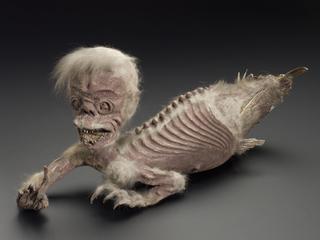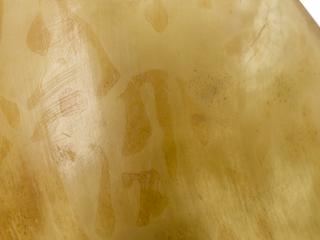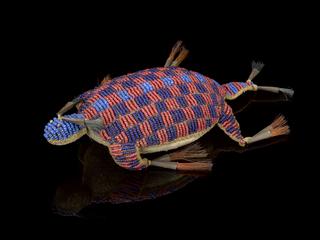

Late 19th or early 20th century ceramic statue of Spanish fraternity member in yellow and green robes. The fraternity processes through the streets of Seville, Spain, during Holy Week, 1860-1935
Dressed in coloured robes with tall pointed hoods, each of these statues represents a religious brotherhood in Seville, Spain. Members are known as Nazarenos. This statue in green and yellow represents La Macarena. La Macarena is the name given to the most beautiful Virgin of Seville and of Spain and is known as 'Our Hope'. From Palm Sunday until Easter Sunday, these brotherhoods process through the streets following large statues showing the events of Holy Week including the Last Supper and the crucifixion. The hoods are worn to show that the penitent is only known to God and no-one else.
It is thought that the statue was made for the tourist market in Spain and was purchased by Captain Johnston-Saint, one of Henry Wellcome’s collecting agents, in 1933.
Details
- Category:
- Ethnography and Folk Medicine
- Collection:
- Sir Henry Wellcome's Museum Collection
- Object Number:
- A633740
- Materials:
- earthenware, polychrome glazed
- Measurements:
-
overall: 545 mm x 140 mm x 125 mm, 2.06kg
- type:
- statue




